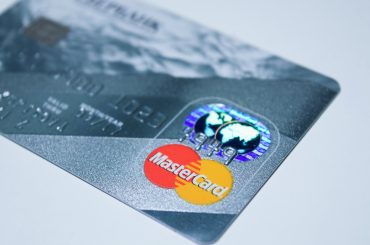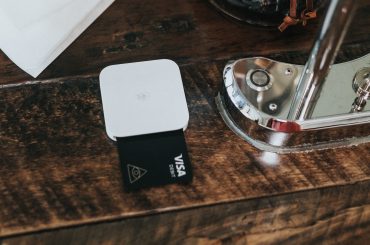The day I turned 18 in 2008, I went to the driving license authority and the nearby bank to open a bank account. I waited for 30 minutes just for someone to address me and hand over a bundle of forms, which themselves took another 30 minutes to fill. Opening a bank account in that era was a task in itself, involving dozens of unnecessary manual processes.
Little did I know that the entire banking ecosystem would be available at the touch of a finger. Such a banking system challenged the existing and cumbersome traditional banking and made banking accessible to millions who were excluded from the banking system. Such banks are called neo-banks (we will talk about them in detail).
One such company N26 has been a true pioneer of neo-banking since almost the concept’s inception. That made me curious to learn the business model of N26. We will also touch upon the marketing strategy of N26.
How does N26 aim to become the first mobile bank the world loves to use?
What is a Neo Bank?
A Neo bank (also known as an online bank, internet-only bank, virtual bank, or digital bank) is a financial institution that operates exclusively online without traditional physical branch networks. Users can perform their financial transactions through Neo bank’s application or website.
Neo banks offer low fees (no infrastructure cost), better customer service (Neo banks accept users with inadequate credit history typically rejected by banks), and enhanced technology (leverage Artificial intelligence). The market size of neo banks was estimated at nearly 35 billion U.S. dollars in 2020.
The range of services provided by Neo banks is not as broad as that of their traditional counterparts. The business model they tend to apply also differs from incumbent banking institutions’ model—a large portion of the income of Neo banks is mainly made up of transaction fees received when customers pay with their debit card.
What is N26?
N26 is one such leading European Neo Bank headquartered in Berlin, Germany. The company was founded as a financial technology startup in 2013 by Valentin Stalf and Maximilian Tayenthal with a vision to transform the way individuals manage money and change banking for the better. The name is derived from the 26 smaller cubes in a complete Rubik’s Cube.
N26 has a full European banking license, state-of-the-art technology, and no branch network. N26, as of 2021, had 7 million customers in 25 markets and was valued at US$9 billion. N26 aims to offer a 100% digital banking experience that’s designed to be transparent and straightforward, managing a monthly transaction volume of ~5.5 billion Euros.
Since its inception, N26 has raised over $1.7 billion in 8 funding rounds from investors like Tencent, Earlybird Venture Capital, Allianz X, Insight Venture Partner’s and Peter Thiel’s Valar Ventures.
By 2015 N26 had launched its products for the first time, unveiling its free N26 digital bank accounts and N26 Mastercards in Germany and Austria. But as soon as N26 got a German banking license in 2016, it took a conscious decision to build in the cloud to leverage the agility and scalability of cloud and modern core banking platforms.
N26 chose Mambu’s cloud banking platform to transition from a newly launched single-market entity to Europe’s first pan-regional mobile bank as the platform provided the agility, customer experience, and the ability to scale. In the below video, N26’s tech lead shares their approach to development and delivery.
N26 Business Model in Detail
N26, with its product innovations, is setting the standards high in the banking industry, which is heavily regulated, and infamous for lack of transparency. N26 is offering its users a suite of products and features through mobile that is transparent, comprehensive, and inclusive.
Let’s first understand the value proposition of the N26 business model:
Free Online Bank account– N26 in its Basic plan allows users to create a free bank account in just 8 minutes. Users can send, receive, and manage their money in one place via the N26 mobile app or the N26 WebApp. No paperwork. No queues. No account fees. Users get a free virtual debit card powered by Mastercard and can enjoy three free cash withdrawals per month from NFC-enabled ATMs.
Making security a priority– Funds in the N26 account are protected up to €100,000 by the German Deposit Protection Scheme. N26 bank account comes with three-tier security measures that protect all transactions. N26 cards are 3D Secure (3DS) enabled to enhance security during online transactions.
Insights on spending habits– With N26 Statistics, users can gain insights into their spending habits in real-time. Users can track their payments and get a clear overview of their upcoming regular payments.
Split the Bill– Split the Bill feature lets users split payments made from N26 accounts with friends or family members, even if they’re not N26 customers. It provides the convenience of not asking for separate bills.
Budgeting tools– N26 Spaces is a feature in the application that allows you to budget easily and save money. You can name your space as per your goal. For ex- you want to buy an electric bike. You can create a space with the name “electric bike” and put funds aside by separating your savings from expenses.
N26 Insurance- With N26 Insurance, users can insure their laptops, mobile, or smartwatches against theft, malfunctions, liquid damage, and accidental damage. Interestingly you can also get your bike, home and pets insured.
Mobile Transfers– Users can make free bank transfers in real-time with N26 MoneyBeam that instantly send, receive, or request money from other N26 users using just an email or phone number.
Zero Transfer Fee– When consumer purchases in another country or currency, banks, and card companies often charge fees to facilitate the transaction. At N26, all accounts feature free card payments worldwide without any transaction fees.
Then how does N26 make money? Let’s deep dive into the revenue aspect of N26’s business model.
N26 wouldn’t disclose a revenue figure for 2020 but said gross revenues doubled to nearly 100 million euros in 2019, from 43.6 million euros a year earlier, while decreasing its losses from 165 million euros to 110 million euros.
In 2019, N26 primarily earned revenue net commission income (driven mainly by subscription revenues and the provision of payment transaction services) which increased by 244%, amounting to EUR 47.5 million. N26 significantly bolstered its net interest income by 82% to EUR 9.3 million, expanding treasury activities and credit-based products and services.
In 2021, N26 expanded beyond its subscription, core banking, and payments business to new services, increasing its bandwidth of banking revenue streams. Let’s break down each revenue stream in detail.
Subscription Fees– There are four different plans for personal usage.
- The standard plan is free of charge. You can still enjoy 100% mobile banking, up to 3 withdrawals, insights on spending, and complete account security as per the German Deposit Protection Scheme. In the free plan, you only get a virtual debit card.
- N26 Smart plan, priced at €4.9/month, along with features of standard plan offers Spaces subaccounts, two extra withdrawals, and premium partner offers. You can even round up every card transaction to the nearest euro and automatically save the difference in a space. You can choose your plastic debit card from 5 colors that best fit your style.
- N26 You plan, priced at €9.9/month, along with features of N26 Smart plan offers travel insurance packages, mobility insurance, and winter sports insurance,
- N26 Metal plan, priced at €16.9/month, along with features of N26 You plan, offers car rental, phone insurance, three extra withdrawals, and a dedicated support line for N26 Metal subscribers. You get a metal card in this plan.
Overdraft Interest– An overdraft allows any banking user to borrow a certain amount of money from the bank if your account is negative. As an N26 customer, users can get an overdraft of up to €10,000. N26 makes money by charging an interest rate of 8.9% to the overdraft.
Insurance Commission– As mentioned above, N26 Insurance is a product that insurance electronics, homes, pets, etc. Unless a user has subscribed to N26 Metal, in which insurance is already included, the user can separately pay a premium. Here N26 makes a minimum of €4.76/month per insured product.
Buy Now Pay Later– Many fintech companies champion the concept of Buy now pay later. N26 allows users to split their expenses up to €500 in 3-6 months installment. N26 makes money by charging an annual interest rate of 7.49% to 11.99%, depending on the user’s internal credit score.
Klarna is another champion of Buy Now Pay Later. How do such companies make money?
Loan Interest– N26 offers loans to users of up to €25,000 with N26 Credit for education or startup or furniture, or anything else without any paperwork, with a payback period of 6-60 months. N26 has also partnered with Germany’s leading loan marketplace, auxmoney, to bring more loan options to the users. N26 makes money in this case by charging an interest rate on the loan amount, starting from 1.99% p.a.
Interest on cash deposits– How does any bank make money? Banks use the cash deposits of account holders in loans or financial markets and earn interest. They share a part of it with their users as interest on their savings. N26 does the same. N26 offers up to 1.38% interest on the cash in its savings account.
N26 Marketing Strategy
N26 knows very well that most of its audience is millennials and Gen Z, who are intelligent and conscious of the brand they associate with. N26 has adopted a minimalist approach in its marketing strategy by keeping advertising uncluttered and straightforward. N26 wants to ensure that its users feel prestige while using its card. This can be seen in the way it has designed its debit cards.
N26, with its marketing campaigns, wants to communicate that it aims to solve the pain points that customers usually have with traditional banks: hidden fees, slow and complex sign-up process, poor digital experience. Let’s see a couple of campaigns and analyze what they signify about the brand.
#nobullshit campaign
There is a lot of bullshit flying around these days. It can be hard to filter through what’s true and what’s, well — bullshit. To target millennials who are not afraid to call out any bullshit, N26 launched an outdoor campaign with billboards around the city. Consumers are fed up with the existing banking system, and N26 wants to call on that.
“Young, Smart and Freelance” campaign
The campaign was specifically designed for the Italian market. The percentage of young (25–34) Italians who are self-employed climbed to 16.3% (That’s almost double the European average and the target market of N26). Through stories of freelance professionals, N26 highlighted the solutions offered by N26 business accounts to help them manage their finances, from budgeting to saving for future projects.
Conclusion
With a market share of over 20% in French and German markets, N26 has become a true pioneer of the Neo Banks that aim to be loved by all. N26 has become one of the world’s fastest-growing banks today—by delivering a simple and intuitive banking experience to its customers every day.
The Neo Banking market is still nascent with many regional players (Chime in U.S. or Revolut in the U.K. or Paytm in India), and N26 has a lot of ground to cover. It would be interesting to see how N26 makes a space for itself in international markets. Let’s wait and watch!

















